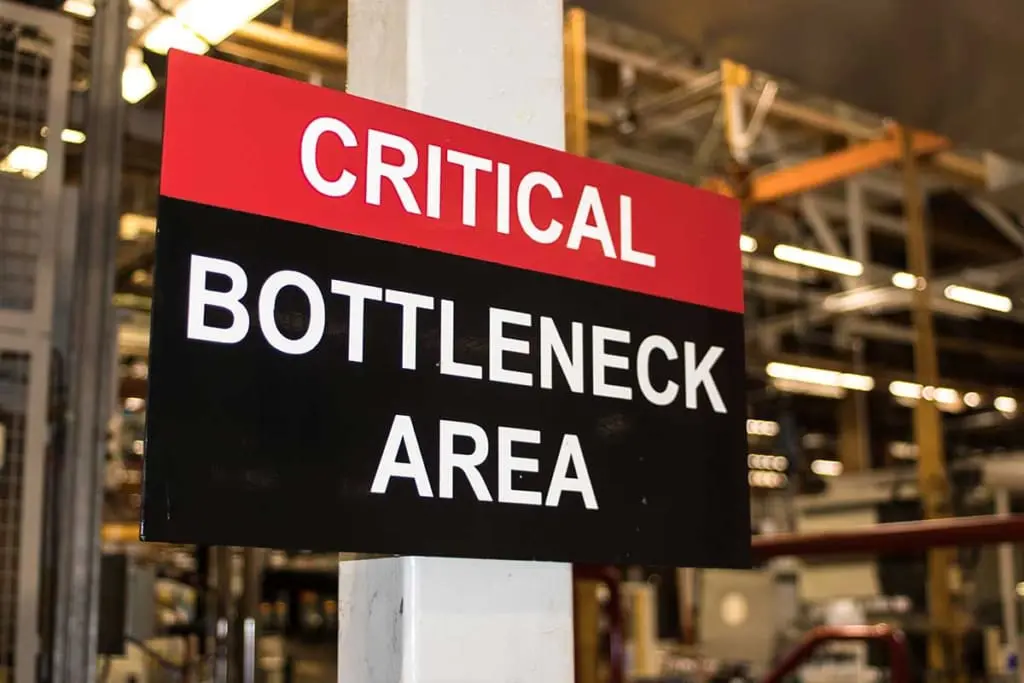Long-term growth for manufacturers with SEO
Manufacturers require a comprehensive SEO strategy to the same degree as any other business. However, the industry isn’t as clear on this reality as some other sectors.
Many leaders and firms believe they can succeed without a strong online presence, relying on connections and word-of-mouth marketing. But while this strategy was effective in decades gone by, it no longer works in today’s environment.
Manufacturing SEO is the process manufacturers use to make their Brand and their website more visible in Google and Bing search results. It includes on-page activities (such as including relevant keywords), and off-page strategies too (like link building).
This guide explains why crafting effective SEO strategies is essential as a manufacturer before exploring the techniques that could help these businesses thrive.
No time to read this article, why not listen to the audio conversation.
Why SEO is critical for manufacturers
Search engine optimisation is critical for manufacturers for several reasons. First, it offers greater visibility for customers.
Ranking higher in SERPs allows prospects to find their products and services faster without exploring rival options first. Because of this, targeting keywords like “industrial parts supplier” or “custom steel fabrication” can be highly beneficial. Stakeholders in client firms are more likely to bookmark high-ranking manufacturers than those sitting on page two and beyond.
Furthermore, SEO enables manufacturers to target the right audience. These techniques attract curated traffic from stakeholders genuinely interested in their products, making the process more granular. For instance, industrial SEO can focus on “steel girders” production instead of generic “steel.”
Finally, SEO is cost-effective–something lean manufacturers will appreciate. Compared to paid advertising, it can be substantially cheaper, especially when implemented over the long run. Manufacturers ranking higher in search results for their chosen keywords often attract high-paying clients for free, eliminating the usual sales pipeline spending.

How to craft an effective SEO strategy as a manufacturer
Crafting an effective SEO strategy for a manufacturing firm requires patience and research. Generic techniques can work, but those tailored to the sector are likely to perform better in the long term.
Generally, manufacturing SEO is about crafting credibility and respect. The higher these firms rank in Google SERPs, the more likely it is that prospective clients will take them seriously.
The following strategies reveal how manufacturers can develop more effective campaigns:
Identify stakeholders in client firms
The first step is to identify key stakeholders in client firms. Unlike B2C companies targeting consumers, manufacturers must focus on B2B decision-makers.
This step is the most challenging for many companies, but also the most rewarding in the long run. Industrial brands need to understand the motivations, pain points, and desires of their customers–procurement managers, engineers, and executives in third-party organisations. Characterising these enables them to develop superior SEO strategies that grab their attention and make sales more likely.
For example, SEO should focus on solutions to the technical problems these groups face. Manufacturing brands should find ways to deal with common issues their clients may encounter and advertise these via search engines.
Furthermore, SEO should concentrate on using language that will appeal to decision-makers. Company audiences can be highly varied, even within firms.
Conduct precise keyword research
Next, manufacturers must conduct precise keyword research. Getting this step right enables them to target stakeholders and decision-makers using industry-recognised jargon.
Beginner manufacturing firms should commence with long-tail keywords. These are less competitive, allowing brands to rank higher for them. And they are more common in the manufacturing sector because of product complexity.
A long-tail keyword is a phrase users type into Google containing three or more distinct words. Examples include:
- “Valves for heat pumps”
- “Rolled carbon steel”
- “Energy generators for outdoors”
These keywords don’t usually have high search volumes but they can enable manufacturers to gain a foothold and begin generating domain authority.
Most industrial companies use software tools to support their keyword research. Examples include:
- SEMrush–Ideal for in-depth competitor analytics and unravelling keyword difficulty
- Ahrefs–Suitable for manufacturing companies wanting a simple, easy-to-understand solution with minimal setup costs
- Google Keyword Planner–A generic keyword planning app with relevancy data straight from the horse’s mouth
For more in-depth keyword discovery, it is worth using specialist research services. These excel in finding hidden keywords that run-of-the-mill tools miss, potentially improving competitiveness further.
Create value-driven content
Manufacturing firms should also create value-driven content for SEO. Getting this step right can boost organic traffic and encourage inbound backlinks.
Industrial companies that create incredible content can dominate their sector. These firms take advantage of the paucity of information in their niche and use this to attract prospective clients.
For example, manufacturers can write:
- In-depth guides showing prospective clients how to use their services, place orders, and get the correct materials
- Technical articles that go into depth on topics they understand, revealing their expertise
- Case studies on how they have helped other clients
The best content is original and can’t be found elsewhere. These pieces often attract the most links as other websites source their information.
Marketing professionals call these pieces “evergreen” because they provide SEO juice over months and years. External websites continue forging links to these pages due to their uniqueness and value to their users.
When writing content, top manufacturers focus on alleviating their target audience’s pain points. They craft guides and articles that help them manage challenging problems while pointing them toward their services.
Focus on technical SEO
Manufacturers also need to focus on technical SEO–the most challenging aspect of the process. Firms must use these tools to differentiate themselves from others in their industry.

Work starts with ensuring websites are “crawlable.” Google’s algorithmic bots should be able to probe all the domain’s pages and add them to its index.
SEO professionals help this happen by adding XML sitemaps to websites. These ensure search engines can link to all the pages the site has in search results.
Work then progresses to ensuring the website loads quickly. Faster times meet Google’s PageSpeed criteria, which can lead to a significant bump in rankings. Manufacturers that focus on creating domains that function adequately for those on smartphones and tablets can see SERP improvements.
Google takes mobile-friendliness seriously and looks for it when assessing the suitability of sites for its users. Manufacturers may work primarily on desktop, but Google still prefers them to set up their sites for mobile users.
Lastly, adding schema markup helps boost technical SEO. This technique involves adding text to the backend of websites that makes it clear what the pages contain. It’s a clearer explanation that Google’s bots understand (rather than forcing them to scan the page).
Build high-quality authority through backlinks
Building high-quality backlinks is another effective SEO strategy for manufacturers. Adding these provides Google with additional signals in order to find a page relevant for a set of keywords.
Manufacturers can adopt several strategies to build links, including:
- Use link-building agencies
Link-building agencies are the most basic option–something offered by most SEO professionals. These involve a third party creating the content and then posting it on a network of partner sites with a link pointing back to the manufacturer’s pages.
These pages are dictated by the SEO and are aligned with the keywords that require additional off page signals.
Google doesn’t mind this practice, as long as the content provides value to users. As such, manufacturers must find high-quality marketing partners that can remain within the bounds of the rules.
- Build links organically
Another approach manufacturers can use is to build links organically. These are less predictable but often more valuable (and less prone to Google’s scrutiny).
As discussed, these links occur when third-party sites cite their information. Most webmasters will link back to a manufacturer both as a citation and to give them credit for originating the information.
High-quality content creation leads to organic link creation almost automatically.
- Guest posting
Manufacturers can also post content on third-party sites with links to their service and contact pages. Again, these tell Google that the site is real and offers genuine value to visitors.
However, this approach is more time-consuming because it requires forming personal relationships with blog site hosts.
- Press Release Distribution
Finally, some manufacturers use press release distribution to create backlinks. These involve writing a newsworthy story about their products and then distributing it to news outlets and organisations across the globe.
Many of these campaigns result in hundreds of links from high-authority media sites, though they tend to be wildly more expensive than the above techniques.
Stay updated, measure and adapt
Lastly, manufacturing firms need to measure their SEO campaign success and adapt. Techniques that work one year may no longer continue to produce juice in the next.
Numerous tools allow firms to measure their campaigns’ success. Google Analytics is the most common but there are other options, including Matomo, Plausible, and Heap.
Sophisticated manufacturers use these tools to check the following metrics weekly or monthly:
- Organic traffic
- Conversion rates
- Keyword rankings
Measuring these allows them to determine whether their campaigns are going well or if they need to change something.
Ultimately, manufacturing SEO is an evolving field that changes regularly. Firms in the sector need to understand their niche and how to adapt their SEO to cater to it. Knowing their audiences, keywords, and backlinking options can be highly beneficial.
Ready to take that next step?
Get in touch with us today to discover how our specialists can fully maximise your SEO performance..


